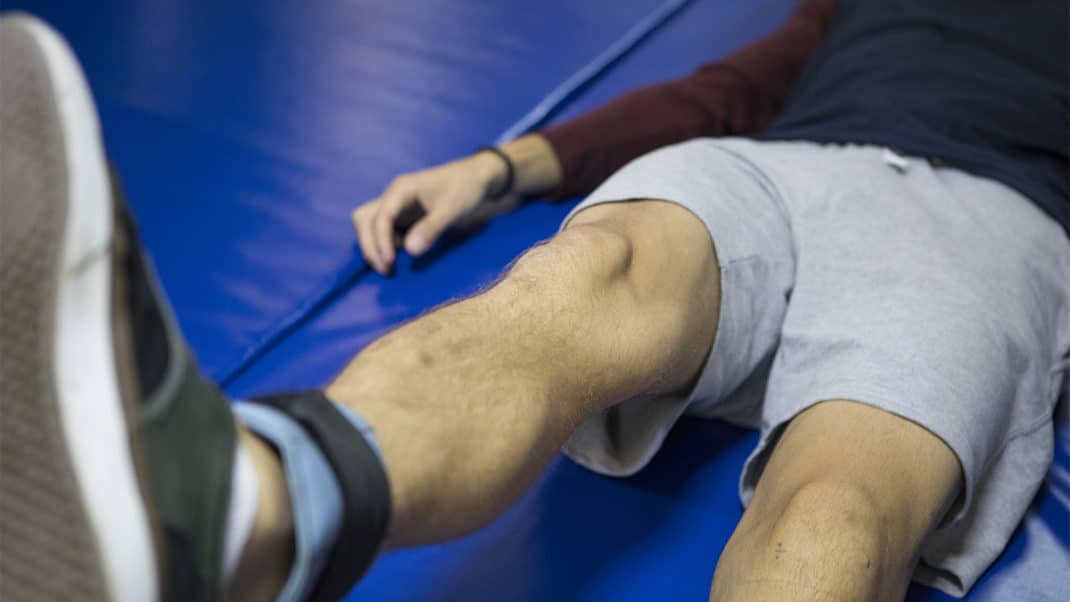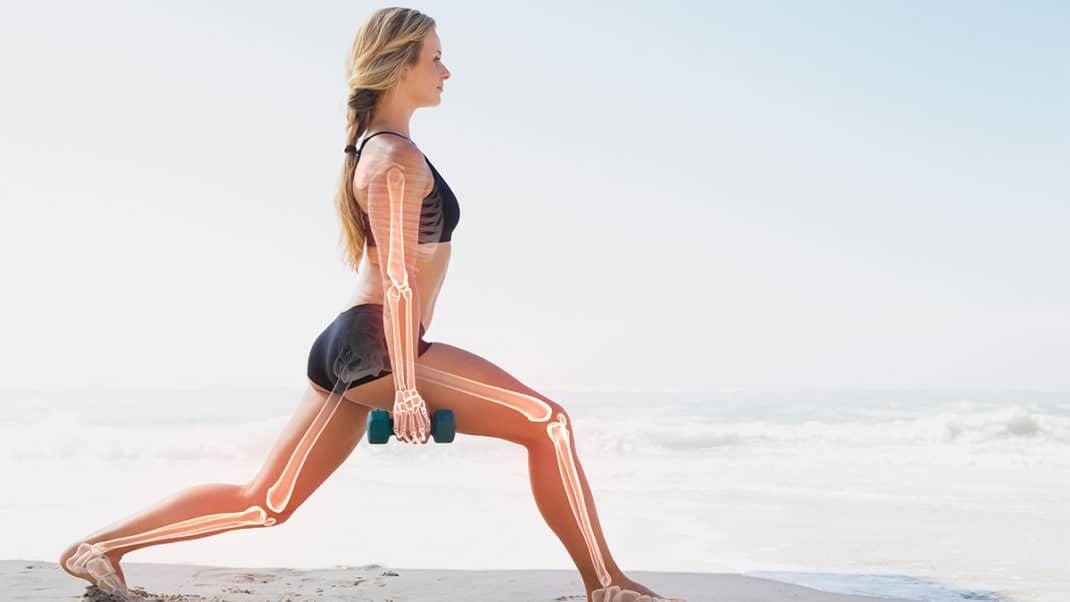Treating and Preventing DOMS
Knowing more about the causes of delayed-onset muscle soreness can go a long way in guiding clients toward pain-free exercise.
“I can’t believe how sore I am from that workout you gave me the other day,” your new client laments as she warms up for her training session. “I can hardly lift my arms and I’m not sure I can do anything today,” she complains.
Sound familiar?
Generally, individuals of all fitness levels experience delayed-onset muscle soreness (DOMS), the increased perception of pain and discomfort following exercise involving increased intensity, longer duration, unfamiliar movements or eccentric muscular work. It is a normal physiological response.
Nonetheless, because exercise-induced muscle damage and its
accompanying sensations of pain and discomfort can impair physical training and performance, DOMS treatment and prevention are of great concern to coaches, personal fitness trainers and physical therapists. To prevent or treat DOMS, you must first understand its causes and attempted solutions.
Szymanski (2001) has extensively evaluated the causes of and solutions for DOMS. In another, more recent study, Connolly, Sayers & McHugh (2003) also offer an explanation for the mechanisms of DOMS and various possibilities for its prevention and treatment. This article about DOMS treatment and prevention reviews the findings of these researchers.
Studies Reviewed: Connolly, D.A.J., Sayers, S.P., & McHugh, M.P. 2003. Treatment and prevention of delayed-onset muscle soreness. Journal of Strength and Conditioning Research, 17 (1), 197-208.
Szymanski, D.J. 2001. Recom-
mendations for the avoidance of
delayed-onset muscle soreness. Strength and Conditioning Journal, 23 (4), 7-13.
Causes of DOMS
For many years DOMS was attributed to the accumulation of lactate in muscles after intense workouts, but the perception of pain and soreness due to intense eccentric exercise has been shown to be completely unrelated to lactate buildup. Szymanski (2001) notes that, although blood and muscle lactate levels rise considerably during intense eccentric and concentric exercise, they return to normal 30 to 60 minutes afterward. DOMS peaks 24 to 72 hours after a bout of intense eccentric exercise, when lactate levels have been normal for a considerable amount of time. Peak increase in lactate levels does not coincide with peak perception of DOMS, showing that the two are independent of each other.
Furthermore, eccentric exercise produces less lactate than concentric exercise at the same power. By that reasoning, if DOMS were due to the accumulation of lactate in muscles, it would be more prevalent after concentric exercise than after eccentric exercise (Szymanski 2001).
Again, the opposite is true. DOMS is precipitated by tissue trauma due to predominantly eccentric exercise, such as downhill running, plyometrics or resistance training. Resultant signs of DOMS are decreased muscular flexibility, contraction velocity and contraction angle; and increased fatigue. (Connolly, Sayers & McHugh 2003).
Eccentric exercise damages the muscle cell membrane, setting off an inflammatory response. This inflammatory response leads to the formation of metabolic waste products that act as a chemical stimulus to the nerve endings directly responsible for the sensation of pain. These metabolic waste products also increase vascular permeability and attract neutrophils (a type of white blood cell) and macrophages to the site of injury. At the site of injury, neutrophils generate free radicals (molecules with unshared electrons); and calcium (which may increase the activity of protein-degrading enzymes) is released. Both neutrophils and calcium may exacerbate the existing muscle cell damage. Swelling, also common at the site of cell membrane injury, can cause additional sensations of pain (Connolly, Sayers & McHugh 2003).
It is important to distinguish DOMS (the manifestation of muscle damage) from injuries such as muscle strains. Vigorous exercise, particularly eccentric exercise, can severely worsen a muscle strain, but in a muscle experiencing DOMS, continued eccentric exercise without
further muscle damage is still possible (Connolly, Sayers & McHugh 2003).
Symptoms of DOMS
Szymanski (2001) and Connolly, Sayers & McHugh (2003) agree on the symptoms often associated with DOMS. These include loss of strength, pain, muscle tenderness, stiffness and swelling.
Loss of strength usually peaks within 48 hours after an exercise bout; full recovery can take as long as 5 days. Pain and tenderness peak 1 to 3 days after exercise and typically subside within 7 days. Stiffness and swelling can peak 3 to 4 days after exercise and usually resolve within 10 days. It is important to note that these symptoms are not dependent on each other and do not always present simultaneously.
Proposed Interventions
Despite the considerable amount of research on DOMS treatment, no one method has, to date, proven consistent in preventing or treating it effectively. Among the popular interventions are nonsteroidal anti-inflammatory drugs (NSAIDs); nutritional supplements; and physical modalities such as warm-ups and the repeated-bout effect.
NSAIDs
Nonsteroidal anti-inflammatory drugs (NSAIDs)—such as aspirin, ibuprofen and flurbiprofen—have long been considered as a treatment for alleviating the symptoms of DOMS. NSAIDs make a theoretically strong case for helping to combat the inflammation that occurs with exercise-induced muscle damage. However, despite this strong theoretical backing, research on the effectiveness of NSAIDs has provided mixed and conflicting results. Because of not only inconsistencies in type, dose and timing of various NSAIDs among studies but also side effects such as gastrointestinal distress and hypertension, NSAIDs do not appear to be an optimal choice for treating DOMS (Connolly, Sayers & McHugh 2003).
Nutritional Supplements
Certain nutritional supplements have also emerged as a potential treatment for DOMS. Antioxidants, such as vitamins C and E, are known to reduce the proliferation of free radicals, thought to be generated during the inflammatory response and, potentially, to further damage affected muscles. Unfortunately, the effectiveness of antioxidant therapy has been inconsistent in
several studies examining its potential for treating DOMS (Connolly, Sayers & McHugh 2003).
Coenzyme Q and L-carnitine are other nutritional supplements investigated for their potential to alleviate DOMS but not shown to be effective. They may even worsen symptoms (Connolly, Sayers & McHugh 2003).
Warm-Up
Unlike NSAIDs and nutritional supplements, traditional pre-exercise warm-up has been suggested as a means of not only preparing the body for exercise and improving athletic performance but also reducing muscle damage and associated DOMS. Warming up is thought to improve muscle function because it raises muscle temperature, which increases the elasticity of muscle tissue, the resistance of muscle tissue to tearing, and the extensibility of connective tissues within muscle tissue; improves motor unit recruitment; and allows for smoother muscle contraction. The result is more efficient muscle contractions with greater speed and force. In several studies, a concentric warm-up exercise helped prepare muscles for overload by eccentric activity, reducing DOMS (Szymanski 2001).
According to Szymanski (2001), pre-exercise warm-up can be divided into two categories: general and specific. A general warm-up aims to increase core body
temperature with movements such as calisthenics and running, that require the use of large muscle groups. A specific warm-up mimics the movement patterns of the actual exercises and aims to increase the temperature of the muscles to be used in the particular sport or physical activity. Considering the benefits of warming up, it is advisable to precede an intense exercise session with both an adequate general warm-up and a specific warm-up.
However, Szymanski notes that an adequate warm-up duration may vary from 10 minutes to 25 minutes and depends on several factors. Environmental conditions are one factor. Duration also depends on the intensity of the activity to be performed: The greater the intensity of the main activity, the longer and more specific the warm-up needs to be. Even fitness level influences warm-up duration: Less fit people may need a longer warm-up than do fit people (Szymanski 2001).
Repeated-Bout Effect
In addition to warming up, taking advantage of the repeated-bout effect, a progressive adaptation to eccentric exercise, is an effective way to diminish the impact of DOMS. Some experts encourage a gradual introduction of eccentric exercise over a period of weeks: Repeated bouts of lower-intensity eccentric exercise performed 1 to 6 weeks before the initial bouts of higher-intensity eccentric exercise have been shown to consistently reduce exercise-induced muscle damage and DOMS (Szymanski 2001).
Supposedly, the repeated-bout effect accelerates the recovery of strength and range of motion in affected muscles to increase the muscles’ resistance to damage after the first bout. Muscle and connective tissue are also thought to adapt gradually to increasing intensities of eccentric exercise, thereby minimizing the incidence and severity of DOMS (Szymanski 2001).
Szymanski (2001) suggests that, to help clients avoid DOMS, trainers, coaches and physical therapists follow the recommendations for warming up and taking advantage of the repeated-bout effect in “Physical Modalities for Minimizing DOMS.”
Less Pain, More Gain
With a better understanding of the causes of DOMS, health and fitness professionals are better equipped to help clients avoid its complications. It is hoped that this article adds to the knowledge from which personal trainers can draw to optimize results for their clients.
References
Connolly, D.A.J., Sayers, S.P., & McHugh, M.P. 2003.
Treatment and prevention of delayed-onset muscle
soreness. Journal of Strength and Conditioning Research,
17 (1), 197-208.
Szymanski, D.J. 2001. Recommendations for the avoidance
of delayed-onset muscle soreness. Strength and
Conditioning Journal, 23 (4), 7-13.





